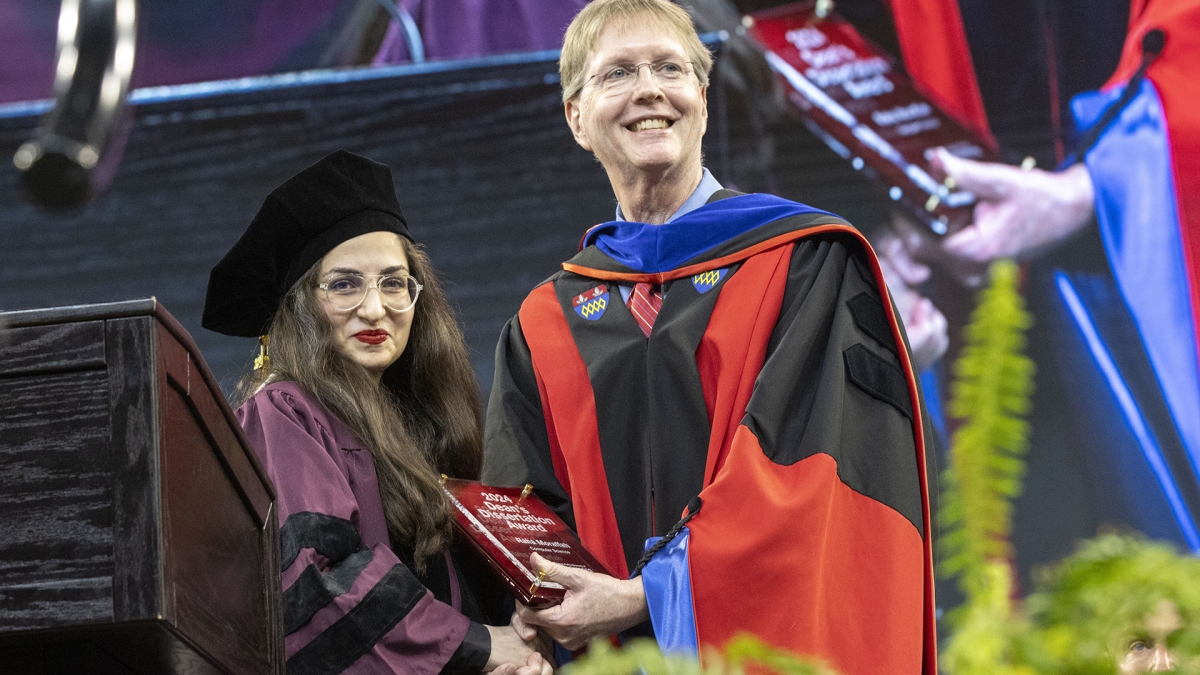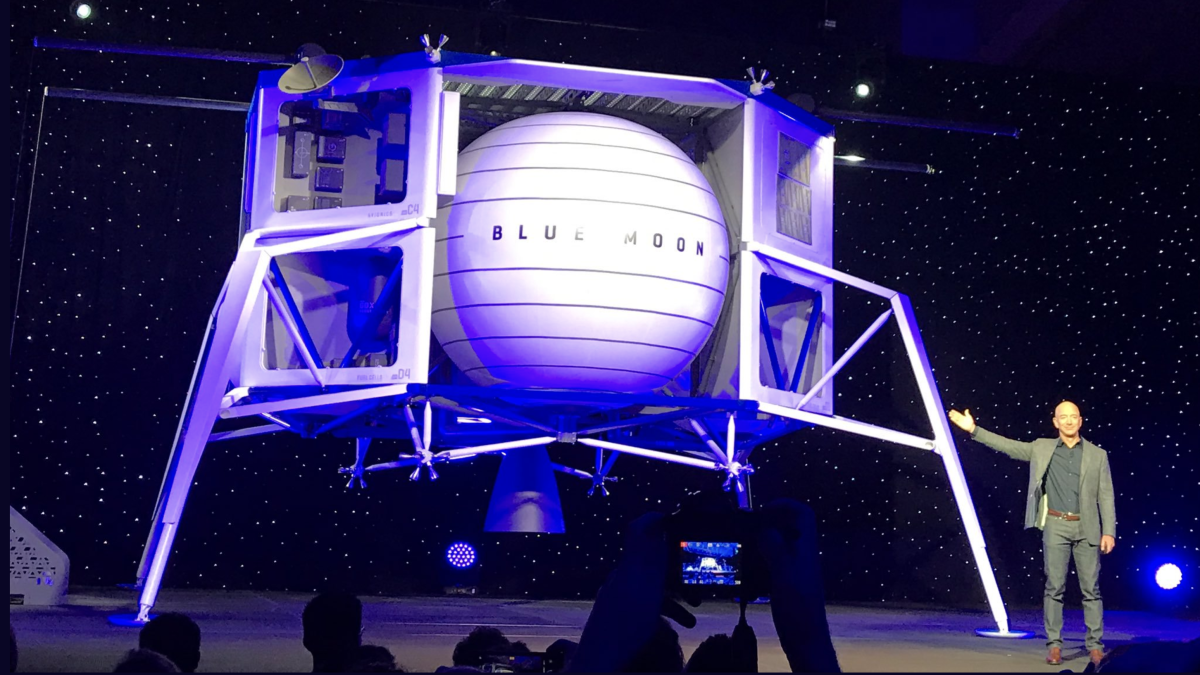Announced today in Washington, D.C., by Blue Origin, Arizona State University has signed a memorandum of understanding with Blue Origin to send payloads to the lunar surface.
Blue Origin, a privately funded aerospace manufacturer, envisions a future where millions of people live and work in space. As part of this vision, Blue Origin is engaged in developing infrastructure for the creation of human spaceflight capabilities.
“ASU and Blue Origin are united in the passion for a positive human space future, and in the goal of partnering universities and the private sector,” said ASU School of Earth and Space Exploration director, Lindy Elkins-Tanton, who also co-chairs ASU’s Interplanetary Initiative.
ASU will develop one or more payload experiments to be launched aboard Blue Origin’s Blue Moon, a flexible lander delivering a wide variety of small, medium and large payloads to the lunar surface.
"It's wonderful to be working so closely with our skilled, innovative and entrepreneurial colleagues at Blue Origin,” said School of Earth and Space Exploration professor Jim Bell, who is also the director of ASU’s Space Technology and Science (“NewSpace”) Initiative. “This collaboration will provide opportunities for our students to get hands-on experience with space experiments and systems and for our faculty to make significant advances in space science, engineering, and education.”
Proud to be on this list! @JeffBezos @blueorigin #BlueMoon @II_ASU @ASU pic.twitter.com/yiDtXk0G3M
— Lindy Elkins-Tanton (@ltelkins) May 9, 2019
This Blue Origin-ASU memorandum of understanding follows last week’s successful launch of three ASU student-led payloads on Blue Origin’s New Shepard space vehicle, the first-ever student-designed and -built payloads to be launched into space and brought back to Earth. These payloads were funded by the Interplanetary Initiative, NewSpace and private donors Peter and Cathy Swan.
ASU, with experience in leading NASA missions and the capability of building space instruments on campus, has a long history of developing and building flight instruments for space and supporting the planetary and astronomy science investigations of their faculty.
ASU has developed a strong interdisciplinary faculty, incorporating astronomers, geologists, engineers, physicists, microbiologists, cell biologists, tissue engineers, immunologists, volcanologists and other researchers to create a superior research environment. The study of space, the planets and the origins of life involves expertise spread across many academic units including the School of Earth and Space Exploration, the School of Life Sciences, the Department of Physics, the Ira A. Fulton Schools of Engineering, the Herberger Institute for Design and the Arts, the School for the Future of Innovation in Society and the Center for Science and the Imagination.
The vision was even bigger than I expected. Positive hopeful aspiration for humankind! @JeffBezos @blueorigin #BlueMoon @II_ASU pic.twitter.com/IdtLaU1MmO
— Lindy Elkins-Tanton (@ltelkins) May 9, 2019
Follow more of Lindy Elkins-Tanton's tweets @ltelkins.
Top photo: Jeff Bezos introduces the Blue Moon, a flexible lander that will deliver a variety of payloads to the moon. Photo by Lindy Elkins-Tanton
More Science and technology
Extreme HGTV: Students to learn how to design habitats for living, working in space
Architecture students at Arizona State University already learn how to design spaces for many kinds of environments, and now they can tackle one of the biggest habitat challenges — space architecture…

Human brains teach AI new skills
Artificial intelligence, or AI, is rapidly advancing, but it hasn’t yet outpaced human intelligence. Our brains’ capacity for adaptability and imagination has allowed us to overcome challenges and…

Doctoral students cruise into roles as computer engineering innovators
Raha Moraffah is grateful for her experiences as a doctoral student in the School of Computing and Augmented Intelligence, part of the Ira A. Fulton Schools of Engineering at Arizona State University…
